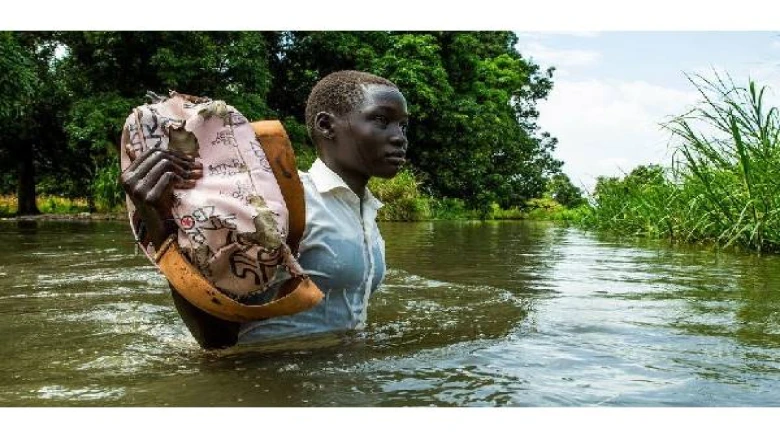National

According to the report, if the entire world consumed resources at the rate of OECD and EU countries, 3.3 piles of the earth would be required to keep up with consumption levels.
Digital Desk: The latest Innocenti
Report Card, 17: Places and Spaces, compares how 39 countries in the Organization
for Economic Co-operation and Development (OECD) and European Union (EU) impact
children's environments.
Indicators
include exposure to harmful pollutants, such as toxic air, pesticides,
dampness, lead; access to light, green spaces, and safe roads; and countries'
contributions to the climate crisis, resource consumption, and e-waste dumping.
According
to the report, if the entire world consumed resources at the rate of OECD and
EU countries, 3.3 piles of the earth would be required to keep up with
consumption levels.
According
to the report, if it were at the rate people in Canada, Luxembourg, and the
United States do, at least five earth would be needed.
While
Spain, Ireland, and Portugal feature at the top of the list
font-weight:normal;mso-bidi-font-weight:bold">, all OECD and EU countries fail
to provide healthy environments for all children across all indicators.
Based
on CO2 emissions, e-waste, and overall resource consumption per capita,
Australia, Belgium, Canada, and the United States are among other wealthy
countries that rank low in creating a healthy environment for children within
and beyond their borders.
Meanwhile,
Finland, Iceland, and Norway are among those that provide healthier
environments for their country's children but disproportionately contribute to
destroying the global environment.
"In
some cases,
bold">we are seeing countries providing relatively healthy environments for
children at home while being among the top contributors to pollutants that are
destroying children's environments abroad," attested Gunilla Olsson, Director of UNICEF
Office of Research.
In
contrast, the least wealthy OECD and EU countries in Latin America and Europe
have a much lower impact on the wider world.
Over
20 million children in this group have elevated levels of lead, the most
dangerous environmental toxic substance in their blood.
In
Iceland, Latvia, Portugal, and the United Kingdom, one in five children is
exposed to dampness and mold at home, while in Cyprus, Hungary, and Turkey,
that number rises to more than one in four.
Many
children breathe toxic air both inside and outside of their homes.
More
than one in 12 children in Belgium, the Czech Republic, Israel, and Poland are
exposed to high levels of pesticide pollution linked with cancer – including
childhood leukemia - and can harm vital body systems.
"
font-weight:normal;mso-bidi-font-weight:bold">We owe it to ourselves and to
future generations to create better places and spaces for children to thrive," Ms. Olsson said.
Children
in low-income families tend to face greater exposure to environmental harm,
entrenching and amplifying existing disadvantages and inequities.
"
font-weight:normal;mso-bidi-font-weight:bold">Mounting waste, harmful
pollutants, and exhausted natural resources are taking a toll on our children's
physical and mental health and
threatening our planet's sustainability," said the UNICEF official.
UNICEF
has urged national, regional, and local governments to improve children's
environments by reducing waste, air, and water pollution and ensuring
high-quality housing and neighborhoods.
Governments
and businesses must immediately honor their commitments to reduce greenhouse
gas emissions by 2050. And climate adaptation should also be at the forefront
of action across various sectors – from education to infrastructure.
font-weight:normal;mso-bidi-font-weight:bold">Child-sensitive environmental
policies must ensure that children's needs are built into decision-making and
that their perspectives are considered when designing policies that
disproportionately affect future generations.
UNICEF's
report outlines that although children are the main stakeholders of the future
and will face today's environmental problems for the longest time, they are the
least able to influence events.
"We
must pursue policies and practices that safeguard the natural environment upon
which children and young people depend the most," Ms. Olsson said.
Leave A Comment